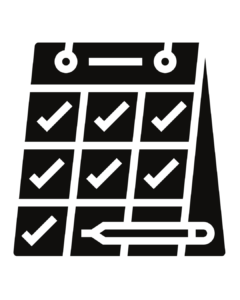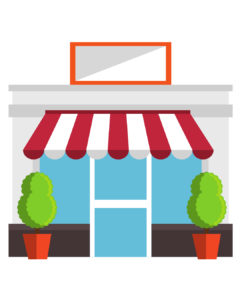Customer Satisfaction
What is Customer Satisfaction?
The customer satisfaction metric evaluates a company’s products, services, and overall customer experience. By showing how well customers are responding to your products or services, it illustrates the health of your business.
Serving clients should be every company’s main objective. This holds for all organizational subgroups, including manufacturing companies, wholesale and retail businesses, government agencies, service providers, and non-profit organizations.
One of the most significant predictors of customer loyalty and future purchases. As a result, it helps with income and business development forecasting. Although the explanation mentioned above seems clear, defining what “happy customers” means for your company is not easy.
Three C’s of Customer Satisfaction
Consistency, consistency and consistency are the three cornerstones of a successful customer experience.
1. Consistency across the client journey
A customer may first speak with a salesperson, then with customer service, and finally with an account manager. Each of these points of contact must offer a consistent experience.

Your staff must understand the overarching message you want to get across. Half your team cannot provide one experience, while the other provides something completely different. While the person’s performance for the customer may change at each stage, the quality of the experience they provide must remain unwavering.
2. Consistency in consumer responses
Trust is crucial in business. One of, if not the most significant, loyalty-motivating factors is this. Studies show that people who trust a company are much more likely to stick with it, so losing that trust is foolish, given the importance of repeat business and brand evangelists.
It might be as easy as failing to give the same quality of service across brand encounters, resulting in a previously satisfied consumer departing your firm due to a lack of emotional consistency. They used to be cheerful, but now they’re not—they’re inconsistent.
3. Communication consistency
Promises made and kept are not the only components of a company’s brand. Additionally, it’s crucial to ensure customers understand that those promises have been saved, which calls for actively developing communications and key messaging that consistently draw attention to themes and delivery.
Your messaging consistency may significantly impact your bottom line. An excellent way for an organization to practice consistency is with a proactive plan that chooses spokespeople from all departments and then gives them the authority to follow corporate key messages and processes. In addition to reducing instability and confusion, this will also contribute to developing a stronger and more enduring bond among staff members, fostering values and clarity and laying the groundwork for success.
Many businesses know that effective communication is essential to a company’s success and survival. Workplace communications have a favorable impact on increasing productivity, efficiency, and employee happiness and morale.
Types of Customer Satisfaction
There are several types of customer satisfaction
Customer satisfaction rating

The most fundamental type of customer satisfaction statistic is this one. Customers are asked how satisfied they are with a particular interaction in the CSAT survey. Customers can choose any number within a specific range, such as 1 through 5, with the lowest number representing the least satisfied and the highest number the most comfortable.
This standard survey is incredibly adaptable. Customers can be asked how satisfied they are with any interaction, and the results will still be beneficial. It may cause the CSAT survey results to be slightly more favorable.
Customer effort score
The simplicity of the customer effort score( CES) measure is comparable to CSAT, but how it is applied is different. Customers are asked how easily they handled a particular experience by their customer effort score rather than their happiness score. CES is useful for identifying issues with your customer-facing processes and services. Customers who describe a contact as “simple” are typically happy.
More customer effort frequently predicts lower satisfaction and vice versa. However, it may be beneficial to combine this statistic with others to understand the causes at work better.
Customer churn rate
Customer satisfaction can be measured by the rate at which your business loses clients to rivals, also called “churn.” After all, customers who stop doing business with you effectively express their displeasure with your company without saying a word. Happy customers tend to stick around, whereas unhappy customers frequently seek better alternatives.
Although this form of customer satisfaction indicator does not provide specific reasons for your customers’ discontent, it does assist in fleshing out the overall picture of whether the individuals you serve are generally pleased with the services you provide.
Net promoter score
How likely is it that your customers will recommend your service or product to others is addressed by the Net Promoter Score, another type of customer satisfaction indicator? Consumers choose between 1 and 10, with 9 or 10 denoting highly likely promoters and anything less than 7 representing potential detractors. This simple poll is used to determine your Net Promoter Score.
Net Promoter Score stands out from other customer satisfaction metrics because of its broad scope. Customers are effectively asked to rate your brand as a whole rather than just one encounter or service when you ask them to complete an online promoter survey. As a result, promoters are happy with your brand as a whole and are willing to promote people they trust to do business with you to build on their reputations.
Five Levels of Customer Satisfaction
1. Not Satisfied
That’s pretty simple. A customer is dissatisfied when their needs are not met.
The customer will look for alternative organizations to meet their stated demands. To protect others, they know from an unsatisfactory experience, a disgruntled customer risks spreading their unhappiness to other potential customers. No business wants it, unfortunately. Unreasonable expectations can lead to unsatisfied customers, who may experience poor service or a defective product.
For instance, wait times could be very inconvenient for customers. In addition, a waiting room is not everyone’s favorite place to wait. Especially if they don’t know how long they’ll have to stay there.
2. Slightly Satisfied
A partially satisfied consumer may have certain expectations that are met but not others. This consumer may return, but if a more attractive choice is presented, they may go elsewhere.
3. Satisfied
A satisfied client receives what they anticipate. Nothing else. Nothing less will suffice. There are no wows in the experience, and they leave pleased but not with a smile.
4. Very Satisfied
A truly delighted client has their requirements addressed and may also be treated to surprises that enhance their overall experience. The element of surprise or the wow factor. This is when client satisfaction becomes enjoyable. Find a technique to surprise the consumer to enhance their experience.
5. Extremely Satisfied
The ultimate objective is to have an utterly pleased consumer. A consumer with this degree of pleasure has an encounter that continuously exceeds all expectations and has wow aspects connected with each experience.
Some consumers are so pleased with the service they receive that they become advocates for the organization and frequently recruit new clients to share their pleasant experiences.
Importance of Customer Satisfaction
It encourages customer loyalty.
It is well-known that unhappy customers are more likely to spread the word about their bad experiences than happy ones.
Your business may receive better reviews and, as a result, more customers if you prioritize customer happiness and make changes in response to negative comments.
It helps to gauge how well the team did.
Customer satisfaction metrics and standards give you information about your support staff’s performance in addition to gauging how your audience feels.
Consumer acquisition is increased.
Excellent customer service is crucial for retaining current clients and attracting new ones. Today’s customers expect high-quality service to permeate every aspect of their interactions with businesses, from the first time they engage in sales or marketing to any subsequent support they need.
To position themselves for success, businesses must integrate top-notch customer service into every touch point.
Lower customer churn
Contrary to popular belief, pricing is not the main factor in customer attrition. You got it right, customer service. Numerous brands have a sizable consumer base despite their outrageous prices. Using customer satisfaction ratings and the results of the CSAT survey, you can improve your customer service processes. Long-term, poor customer service will harm you and cost you as a consumer. Gather ongoing customer feedback and regularly share it with your customer service representatives to gauge your success.
The differentiator in the marketplace
A brand’s success or failure is determined by consumer satisfaction. In this cutthroat environment of numerous businesses, customer happiness must be the main focus of your customer strategy. No amount of marketing or advertising will make a difference if your customers are unhappy. Low consumer satisfaction brands are more likely to fail in the future. Conversely, brands with supporters are considerably more likely to succeed than those without. When you have pleased consumers, you will have brand evangelists.
How to Improve Satisfaction Level?
Customer satisfaction can and ought to be improved over time. Using the metrics, you can start setting development goals for your team and regularly achieving them. To get you started, here are a few more tips and suggested exercises:

–By emphasizing convenience, you can improve customer satisfaction. This can take the form of increasing platform accessibility (adopting Omni channel strategies) or even reducing transaction times.
–Handle expectations wisely- It can help customers trust you and improve their overall satisfaction if you let them know what they can expect from your company upfront.
–Utilize conversation analytics to gauge customer satisfaction- Engagement analytics analyze customer interactions across channels (such as phone, email, social media, and live chat) to provide actionable, data-driven insights for enhancing client satisfaction.
–Live website chats are now available on all websites, and both big and small businesses use them to connect with customers. It helps address customer expectations and concerns, guide them in the right direction, collect feedback, and do other tasks. Customers can use live chats to communicate with customers and gather feedback to ensure they have a good experience. In addition, you can use history to examine earlier discussions and analyze trends to fill in any gaps.
What Factors Affect Customer Satisfaction in Retail?
Effective and knowledgeable approach
Retailers should prioritize product knowledge and associate retention through training, reinforcement, and information exchange. Employees are encouraged to understand their roles, what their coworkers are doing, and how to fill in any knowledge gaps due to this environment. Empowering employees to find out where and how to find out what they don’t know significantly influences whether or not the client departs happy or dissatisfied.
Ongoing associate training may assist in ensuring that shop employees are updated on new offerings, internal priorities, and duties so that they can connect with current customers swiftly and effortlessly.
The in-store atmosphere is appealing.
The first impression is one of the most important aspects of shopping. The lighting, music, and decor of the store, how its items are arranged, and the vigor and attitude of its employees all impact the atmosphere established within a business. As a result, they can significantly affect consumer satisfaction by luring or turning away new and returning customers. (We’ve all been through stores with loud music or overpowering odors, which immediately impact whether we enter or not).

Developing and applying good task management is one strategy that promotes a positive, organized, and enjoyable in-store experience. This ensures that the brand’s goals and objectives are crystallized in daily activities and operations and that employee responsibilities are clearly defined.
Convenient and enjoyable customer service
Today’s busy consumers increasingly seek a simple and practical shopping experience. After all, adding items to a digital cart or downloading an app can remove friction points, ruining the shopping experience. So instead, make your store worthwhile and painless as possible, and then wow customers with outstanding customer service if they are willing to leave the house to visit it.
By empowering and enabling staff, store managers can ensure operational tasks are carried out, removing obstacles to a fantastic customer experience. Regular check-ins and checklists also help clear any confusion about obligations by providing all employees are on the same page.
Comparative Levels Theory
According to the comparison-level theory, consumers estimate their level of pleasure based on an implicit comparison to an internal standard rather than the actual experience.

In Conclusion,
Customer satisfaction measures how well your goods, services, and overall customer experience meet their expectations. Customer satisfaction may be aided by gaining new clients, keeping hold of current ones, and increasing revenue. In addition, excellent customer service motivates greater loyalty and lifetime value in businesses.






